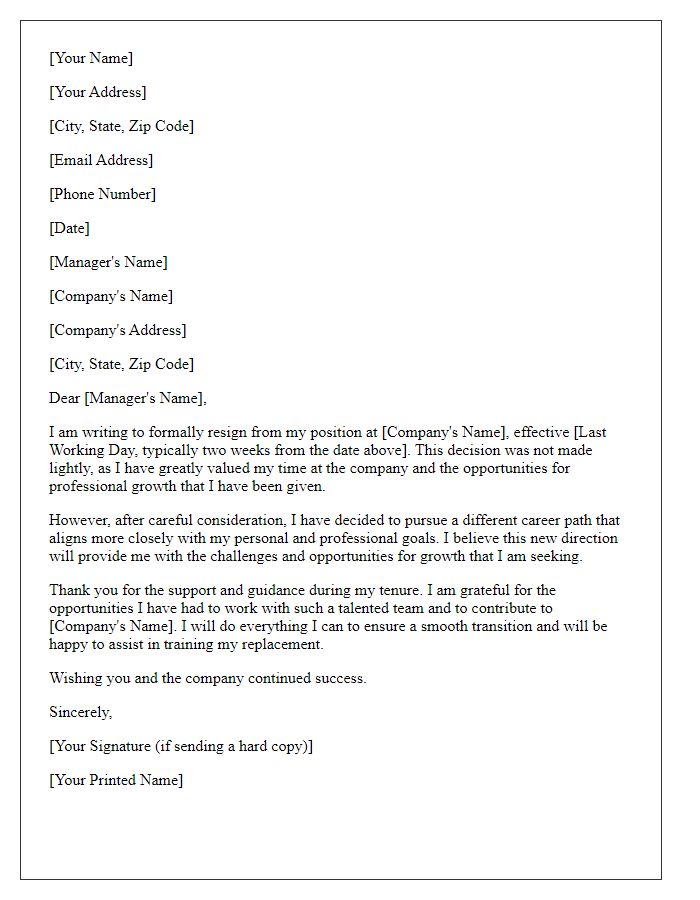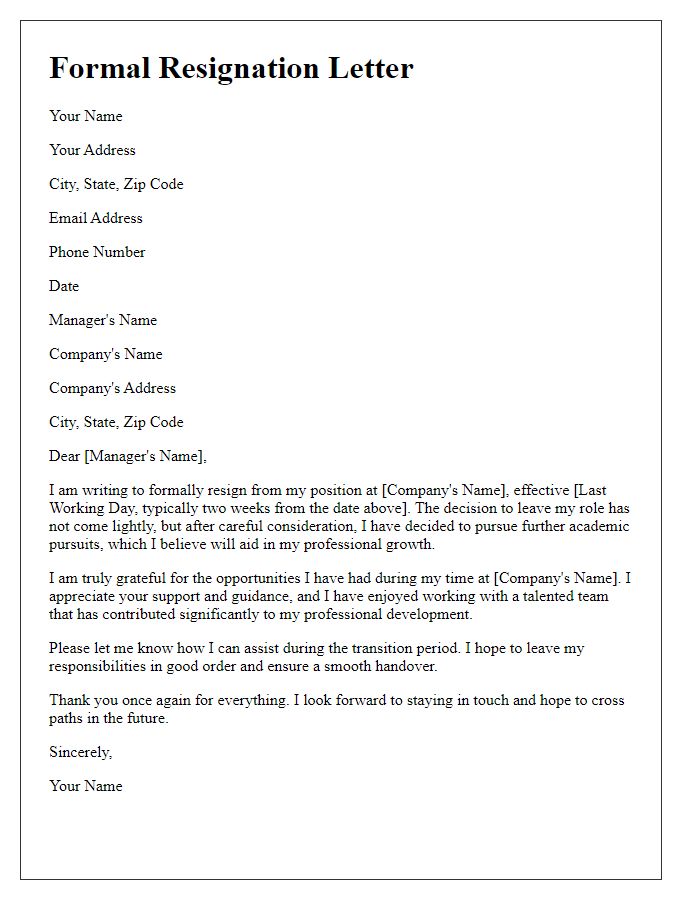Are you considering leaving your current job but unsure of how to communicate your decision? Crafting a professional resignation letter can feel daunting, but it doesn't have to be. With the right template and a few thoughtful phrases, you can ensure your departure is respectful and clear. Dive into our article for a step-by-step guide that will make your resignation process smooth and straightforward!

Professional Tone and Language
Resigning from a position involves communicating your decision clearly and respectfully. A formal job resignation letter typically includes a statement of resignation, your last working day, gratitude for the opportunities received, and an offer to assist during the transition. This professional approach ensures a positive relationship post-employment. In your resignation letter, state your position title, the company name, and the date of your notice. Express appreciation for professional growth and relationships fostered during your tenure. Mention specifics, such as skills acquired or significant projects participated in, to personalize your message. Finally, indicate your willingness to help with the transition process, ensuring a smooth handover of responsibilities to your successor. This thoughtful gesture can leave a lasting positive impression.
Clear Statement of Resignation
Resigning from a position can be a significant and often challenging decision, requiring careful consideration. A clear resignation statement is crucial for ensuring that the process goes smoothly. Formal letters should typically specify the current role, the company's name, and the intended last working day, often providing two weeks' notice. For example, stating, "I hereby resign from my position as Marketing Executive at XYZ Corporation, effectively two weeks from today," conveys the message directly and leaves no ambiguity. Clarity regarding the transition period allows employers to prepare for staffing changes, while maintaining professionalism and respect for the company.
Notice Period and Last Working Day
Resigning from a position requires a formal notification process. A resignation letter should state the notice period (commonly two weeks or more) and the last working day (calculated based on the notice period). For example, if an employee submits a resignation on October 1, and the notice period is two weeks, the last working day would be October 15. The letter should maintain a professional tone, reflecting gratitude for the opportunity provided by the employer. Key components usually include the employee's name, position, the company's name, date, and contact information, ensuring clarity and proper formalities are observed for smooth transition and record-keeping.
Expression of Gratitude
A formal resignation letter typically includes details about the position being resigned from, the notice period, and a statement of gratitude. In a professional environment, an employee might express appreciation for the opportunities received while working at the company, such as skill development and networking, particularly during significant events like project launches or team-building activities. Mentioning specific experiences, like mentorship from a supervisor or collaboration with colleagues, can enrich the context and convey genuine thankfulness. The letter usually states the last working day, adhering to the notice period defined in the employment contract, often two weeks. A well-crafted resignation letter contributes to a positive professional relationship, leaving the door open for future references and ensuring a smooth transition for the team at the workplace.
Forwarding Contact Information
When transitioning from one job to another, providing accurate contact information is crucial for maintaining professional relationships. A formal job resignation letter typically includes essential details such as the resignation date, which is often recommended to be at least two weeks ahead, ensuring adequate notice period for employers. The employee's full name, job title, and department must also be clearly stated to eliminate any confusion regarding the resignation. Moreover, a professional tone should be maintained throughout, expressing gratitude for the experiences and opportunities gained while working at the organization, possibly mentioning significant projects or collaborations. Additionally, including up-to-date contact information--such as personal phone numbers and email addresses--ensures that the employer can reach out in the future, whether for job references or networking opportunities.













Comments